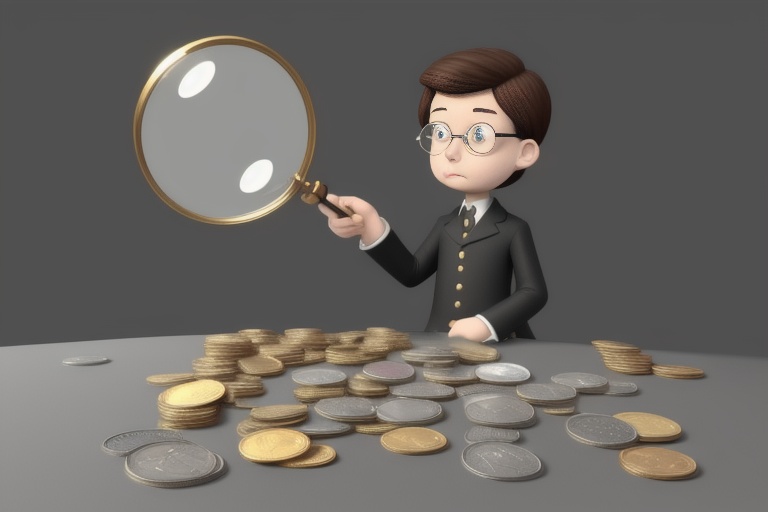As a dedicated coin collector and dealer with three decades of expertise, I keenly understand that storing and preserving coins is a cornerstone of maintaining their value and aesthetic qualities. The discussions that follow aim to equip the passionate numismatist with the insight necessary to navigate the many coin storage solutions available, while also addressing common concerns and practices within the art of coin preservation.
As a dedicated coin collector and dealer with three decades of expertise, I keenly understand that storing and preserving coins is a cornerstone of maintaining their value and aesthetic qualities. The discussions that follow aim to equip the passionate numismatist with the insight necessary to navigate the many coin storage solutions available, while also addressing common concerns and practices within the art of coin preservation.
Understanding the Importance of Proper Storage
Proper storage is more than just organizing coins; it is a defensive strategy against damage and degradation. Several factors come into play when choosing the best storage solutions for your collection:
Protection from Oxidation and Environmental Damage: Coins can be susceptible to tarnishing and chemical reactions when exposed to the air and certain environmental elements.
Prevention of Mechanical Damage: Scratches and physical wear can diminish a coin's grade and, subsequently, its value.
Ease of Viewing and Organization: A well-organized collection is not only visually pleasing but also facilitates easier management and appreciation of your coins.
Security Against Loss or Theft: Ensuring the collection is secure and recoverable is vital, especially for more valuable pieces.
By considering these factors, collectors can choose suitable options, securing their coins' legacy for future generations.
Plastic Flips: A Basic Protection Method
Plastic flips are a widely-used storage option providing clear visibility of coins and basic shielding from mechanical injury. They typically consist of two connected pockets, one of which holds an informational insert about the coin. However, collectors should be cautious; the PVC material in older flips can release damaging chemicals over time. Always look for flips marked 'PVC-free' to avoid this hazard.
Cardboard Flips: A Sturdier Alternative
Moving beyond the basic plastic flip, cardboard flips offer a firmer version of this storage method. These typically have a clear window of mylar or other safe plastic that allows for unobstructed coin viewing. It's imperative to secure the flip properly to avoid the coin sliding out.
Press-In Coin Folders: The Display-Friendly Option
Coin folders, or press-in types, entice collectors with their ease of display and ability to catalog coins by series or date. They consist of cardboard or hardcover book-style pages, with die-cut slots for each coin. The primary drawback is limited protection from dust and handling, which is why many collectors use folders in conjunction with other storage methods.
Coin Tubes: For Bulk Storage
When dealing with multiple coins of the same denomination, coin tubes offer an efficient bulk storage solution. Made from rigid plastic, coins within tubes are somewhat protected from dings and scratches, though it's still crucial to handle them with care to avoid knocking coins against each other.
Coin Albums: A Comprehensive View
Coin albums present an upgrade in protective display, featuring sheets of pocketed inserts made of inert, non-reactive materials. Both sides of the coin can be viewed without removal from the album, which can be especially beneficial for proof coins or those with important reverse side details. An album provides a more substantial form of protection but like any solution, should be used with caution against overexposure to handling and environmental factors.
Coin Slabs: Ultimate Protection for Prized Pieces
For collectors' most valued possessions, coin slabs are the pinnacle of storage and protection. These sonically sealed holders encapsulate the coin and often come with a grade from a professional coin grading service. They shield the coin entirely from the environment and handling. While perfect for individual standout coins, slabs can be somewhat bulky and costly for an entire collection.
Security Measures: Safes and Deposit Boxes
For the ultimate in security against theft, collectors might consider safes or bank safety deposit boxes. A safe at home offers convenience, while a bank deposit box provides off-site security. Remember though, while these options protect against theft, they do not automatically provide ideal conditions for preventing environmental damage.
The Dangers of Improper Storage
Not all storage methods are created equal, and certain materials can actually be detrimental to coins. Storage materials containing soft PVC or sulfur can cause coins to tone, tarnish, or even corrode over time. Always opt for storage meant for numismatic use, which is chemically inert and designed to preserve the integrity of the coin.
Combining Storage Solutions
For the collector aiming at meticulous preservation, employing a combination of storage types optimized for different aspects of protection is advisable. For instance, valuable coins might be kept in slabs, then stored in lockable, lined boxes, while bulk items might be stored in tubes within a safe. The key is to adapt the storage solution to match the importance and needs of each piece within the collection.
Tailoring to Your Collection's Needs
Every collection is unique, and what works for one may not suit another. The longevity and value of your coins depend greatly on matching the most appropriate storage methods to their individual needs. Consider the specifics: climate conditions, the material of the coin, frequency of handling, and value—both sentimental and monetary.
Collectors must recognize that proper storage isn't just about safety; it's an investment in their collection's future. By thoughtfully combining different storage solutions, implementing protective measures, and avoiding harmful materials, you ensure your coins remain in pristine condition, their history and allure preserved for viewers and perhaps collectors of tomorrow.
Information for this article was gathered from the following source.

